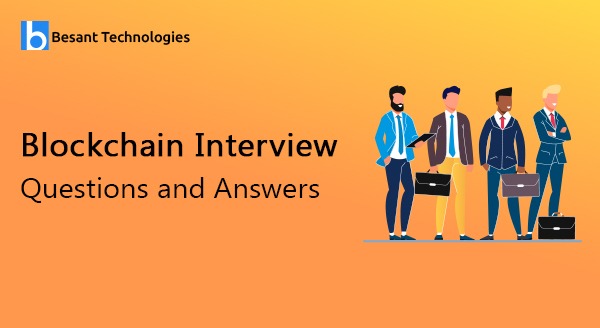
Blockchain Interview Questions and Answers
Block Chain Interview Questions and Answers
Blockchain is the technology which used in the encryption process of maintaining the database of assets or any documents and any other digital storages. Blockchain is the chain of node connectivity and it deals with avoiding any pirate hacks or data threats. Besant Technologies helps in getting the best Blockchain Training in Chennai with covering the complete syllabus and also providing the real-time work applications and making you develop a similar type of Bitcoin, Ethereum or any cryptocurrency processes. Here are the few important Blockchain interview questions and answers which are prepared by top and experienced tutors. If you want to learn Practical BlockChain Training then please go through this BlockChain Training in Chennai and BlockChain Training in Bangalore
Best Block Chain Interview Questions and Answers
Besant Technologies supports the students by providing BlockChain interview questions and answers for the job placements and job purposes. BlockChain is the leading important course in the present situation because more job openings and the high salary pay for this BlockChain and more related jobs. We provide the BlockChain online training also for all students around the world through the Gangboard medium. These are top BlockChain interview questions and answers, prepared by our institute experienced trainers.
BlockChain interview questions and answers for the job placements
Here is the list of most frequently asked BlockChain Interview Questions and Answers in technical interviews. These questions and answers are suitable for both freshers and experienced professionals at any level. The questions are for intermediate to somewhat advanced BlockChain professionals, but even if you are just a beginner or fresher you should be able to understand the answers and explanations here we give.
Multiple Choice Questions for Blockchain interview questions and answers:
These are the sample Blockchain interview questions and answers which were the complete collection of our own Besant technologies and our trainers create this questions and also the exam related questions for certifications. There are more than 1000+ important questions were created by analyzing the nook and corner of the complete syllabus. Besant Technologies is the best BlockChain training in Chennai and making the students to get complete and detailed knowledge in the course and also providing the online training through Gangboard. For more Blockchain Interview Questions and Answers please do check into our training institute center.

